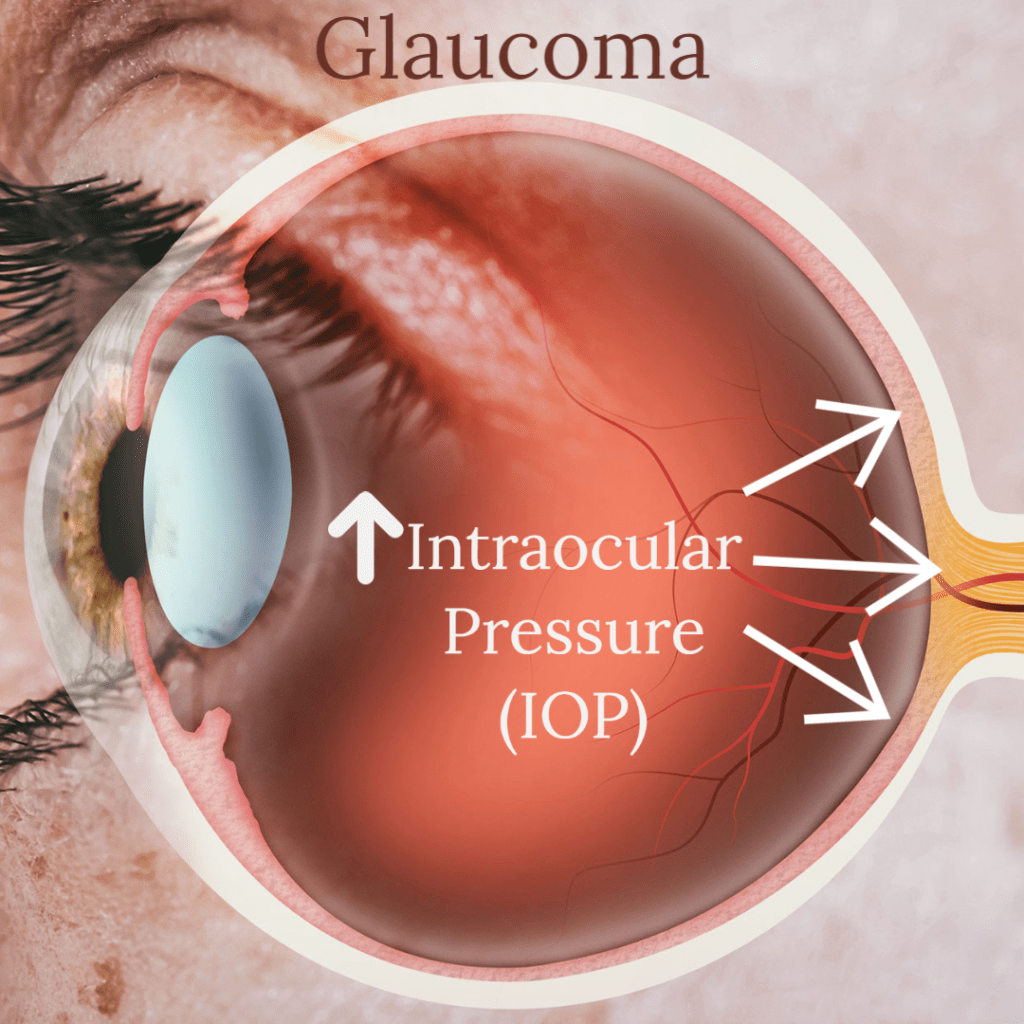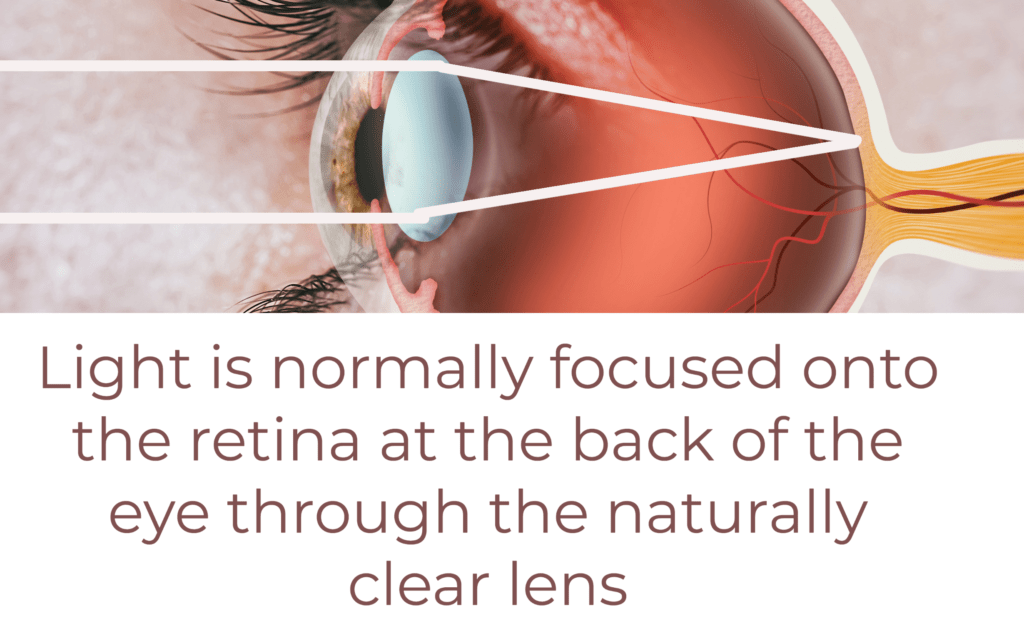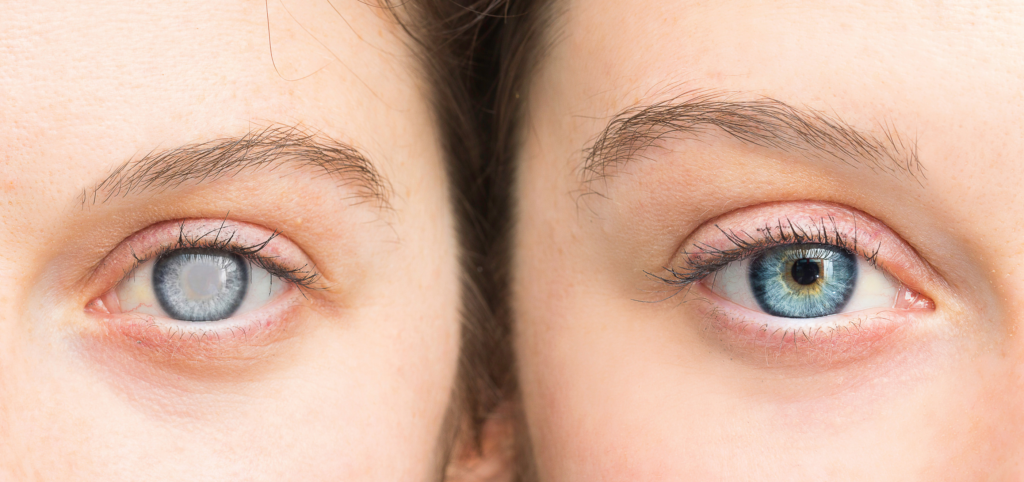When discussing eye health, people commonly talk about two conditions: glaucoma and cataract. Although both conditions can affect vision, they differ significantly in their causes, symptoms, and treatments.
In this article, we will examine glaucoma and cataract in detail to explore their differences.
What is Glaucoma?

Glaucoma damages the optic nerve, which transmits visual information from the eye to the brain. Open-angle glaucoma, the most common type, occurs when the eye’s fluid doesn’t drain properly, increasing pressure inside the eye. This pressure can gradually damage the optic nerve, leading to vision loss and, in severe cases, blindness.
Glaucoma progresses slowly and is often referred to as the “silent thief of sight” because it can cause significant vision loss before noticeable symptoms appear.
Regular eye exams are crucial for early detection and prevention of irreversible damage.
SYMPTOMS OF GLAUCOMA
In the early stages, glaucoma usually doesn’t cause noticeable symptoms, but as it progresses, individuals may experience blurred vision, decreased contrast sensitivity, peripheral vision loss and see halos around lights.
The following symptoms are more common in acute angle-closure glaucoma, which is a less common type but more severe form of the condition.
- Blurred vision
- Seeing halos around lights
- Eye pain
- Nausea and vomiting
Treatment for Glaucoma
Early diagnosis and treatment can help slow or prevent further vision loss in glaucoma. Eye drops, which can help reduce eye pressure, or laser therapy, which can improve the drainage of fluid from the eye, typically comprise the treatment. In severe cases, surgically creating a new drainage channel for the eye fluid may be necessary.
CATARACT

A cataract is a condition where the lens of the eye becomes cloudy or opaque, leading to blurred vision. Normally, the naturally clear and crystalline lens focuses light onto the retina at the back of the eye, but with cataracts, the lens becomes clouded, making it difficult to see clearly.

Cataracts are often associated with aging but can also occur due to injury, nutritional deficiency, certain medications, or medical conditions such as diabetes. In some cases, cataracts may develop in younger people, particularly those with a family history of the condition.
Symptoms of Cataract
The symptoms of cataract can vary depending on the severity of the condition, but may include:

- Blurred or cloudy vision
- Difficulty seeing at night
- Seeing halos around lights
- Increased sensitivity to glare
- Needing brighter light for reading and other activities
- Frequent change in glasses
- Colors appearing faded or yellowed
Treatment for Cataract
Surgeons remove and replace the cloudy lens with an artificial lens, making surgery the only effective treatment for cataracts.
Cataract surgery is a commonly performed surgical procedure and proves to be generally safe and effective. Most people can resume their normal activities within a few days of surgery, although it may take several weeks for vision to fully stabilize.
QUICK SUMMARY
In conclusion, both glaucoma and cataract can affect vision, but they differ in their causes, symptoms, and treatments. Damage to the optic nerve causes glaucoma, while cataract is caused by clouding of the lens in the eye.
A comprehensive eye exam can diagnose both conditions, and early detection is crucial in preventing vision loss.
Treatment for glaucoma involves eye drops, laser therapy, or surgery, while cataract can be treated with surgery to replace the cloudy lens with an artificial one.
